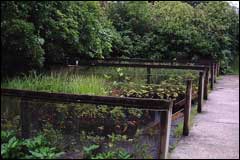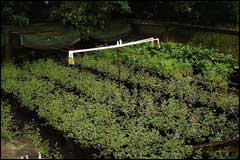Restoration of Plantlife on Tiritiri Matangi
 Over 50% of the island has been replanted in trees and shrubs |
|
|
Auckland University carried out a survey of all existing plant species on Tiritiri Matangi in the early 1980's. It was compared with 2 previous inspections (1900 and 1970). The forest that remained was classified as mostly coastal broadleaf forest with kohekohe, taraire and pohutukawa.
The restoration plan aimed to restore the genetic biodiversity of plant life on the island. Improving the food sources for birds was another feature of the planting programme. Seeds were gathered from the island and a nursery was established in 1983. It produced annually between 20,000 and 30,000 trees and shrubs from 38 species of plant.
Since the beginning of the project, thousands of volunteer hours have been spent planting over 250,000 trees and shrubs.
Tiritiri Matangi is the largest and most successful habitat restoration project in New Zealand. The nursery now raises plants for sale as a fund raising venture for the Supporters of Tiritiri Matangi.
| Important sources of food for birds: | |
|
cabbage tree |
fruit and flowers |
|
coprosma |
berries |
|
five finger |
flowers in winter fruit on female plant only |
|
flax |
flowers, nectar, seeds |
|
karaka |
berries |
|
karo |
nectar, seeds, fruit - bursts in autumn with sticky black seeds |
|
kohekohe |
berries |
|
kowhai |
nectar, flowers, seeds |
|
mahoe |
fruits in late summer on female trees, berries |
|
pohutukawa |
nectar, flowers |
|
puriri |
berries - collected for use in the nursery, fruit, nectar |
|
wattle trees |
( 6 were planted in 1940) although exotic trees continue to provide nectar for the birds |
|
whau |
flowers, fruit |
